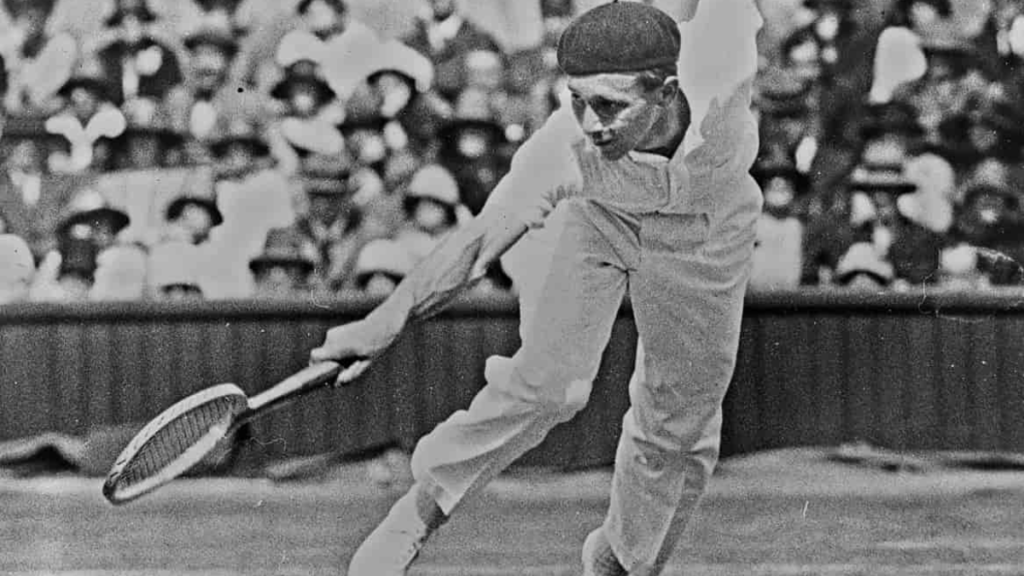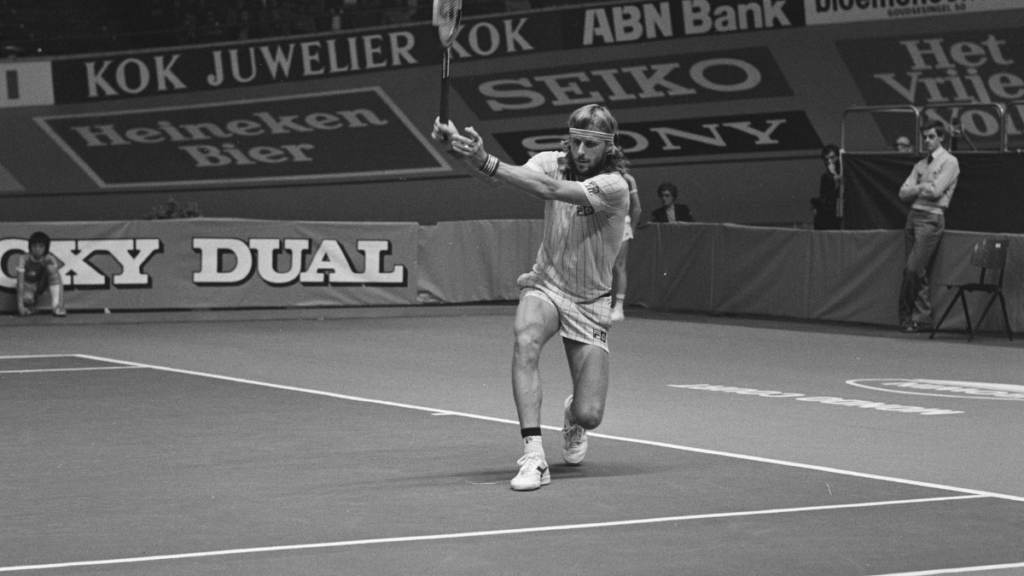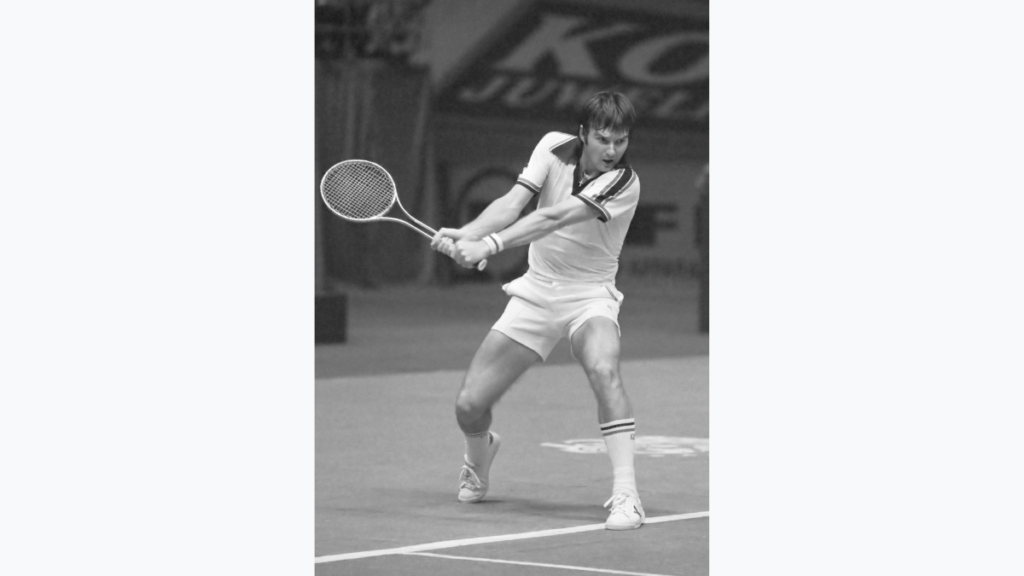The evolution of tennis rackets
The evolution of tennis rackets has played a significant role in shaping the modern game of tennis. A progression from wooden rackets to high-tech composite materials, providing better performance and durability has been seen. The early rackets were heavy and less durable, but as time passed, materials and design were improved to provide more power, control and durability. The introduction of metal and composite rackets have been major milestones in the evolution of the racket.
Tennis rackets are the one and only connection a player has to the ball. This means that the quality of the racket can directly affect the quality of the performance.
The Wooden Racket

The first tennis rackets were made of wood. These wooden rackets were used in the early days of the sport, dating back to the 12th century when the game of tennis was first played.
The wooden tennis racket typically had a simple design, with a long handle and a small head. The head was rectangular, with rounded edges and a flat surface, a long thin handle made of the same wood, was attached with nails.
The only material available at the time to make strings was sheep gut which was tightly strung to provide as much power and control as possible. However, due to the fragile nature of the strings, they were prone to breaking and needed frequent replacement.

The first tennis rackets made had a considerable weight to them, weighing up to 450 grams. As a result, they typically produced less ball speed than modern rackets made of materials such as graphite and titanium. Of course over time the wooden rackets became lighter and more efficient. The exact ball speed produced by a wooden racket would depend on factors such as the specific racket and the skill of the player using it, however on the whole the ball speed produced by wooden rackets was lower than today’s racket due to a lack of strength.
Generally, the best surface for wooden rackets was clay due to the weight and balance of wooden rackets which were well-suited for the slower pace and higher bounces of play on these higher friction surfaces. On grass, the ball bounces flatter due to its harder surface. Due to the limited power and stability of the wooden rackets, it was tougher to return on grass as the ball travelled faster after bouncing.
The Metal Racket

By the 1980s, wooden rackets were obsolete. Metal had taken over in the evolution of tennis rackets. The metal rackets were much lighter than wooden rackets and had a larger sweet spot, which made them more powerful and easier to control. The strings were started to be made using synthetic materials which were generally more durable and provided more power, making the game faster paced and more entertaining. This was a period of time where spectatorship of tennis saw a large increase in popularity.
In the 1970s and 1980s when metal rackets were first being manufactured, they weighed on average between 340 grams and 370 grams, which in the 1980’s was actually heavier than the standard wooden rackets of the day. However due to the material and weight, the ball speed increased as players were able to hit the ball with more power and swing the racket faster due to the material.
Jimmy Connors was one of the first players to switch to metal rackets, he started using a metal racket, made by Wilson (the Wilson T-2000), in the mid-1970s and went on to win several Grand Slam titles with it. Connors helped popularise the use of metal rackets in the professional circuit and paved the way for the widespread adoption of these rackets in the sport.
Metal rackets were typically suited for playing on hard courts. The stiff and strong frames of metal rackets allowed players to generate more power and speed when striking the ball, which was well-suited for the faster pace and lower bounces of play.
The Modern Racket

Today, tennis rackets are made of advanced composite materials such as carbon fibre, titanium, and ceramics. These materials make the rackets even lighter and stronger, which allows for even more power and control! The strings have also undergone changes, with the introduction of synthetic gut and multifilament strings that provide more power and control.
In addition to the racket’s structure and materials, the racket’s shape, size, and weight have also evolved to suit the players’ preferences. Some players prefer a larger racket head size, while others prefer a smaller one. Rackets are also available in different weights to suit different playing styles.
Modern rackets can be divided into 3 different categories:
Lightweight Rackets – Weigh between 227-272g (8-9.5 oz), they offer more speed and manoeuvrability, making them ideal for players who have a fast swing and need to generate quick shots.
Medium Weight Rackets – Weigh between 273-326g ( 9.6-11.5 oz), they are well balanced and offer a good combination of power and control, making them ideal for players who have an all-around playing style.
Heavyweight Rackets – Weigh between 328-357g (11.6-12.6 oz), they offer more stability and power, making them ideal for players who have a strong and consistent swing and need to generate powerful shots.

In the modern game of tennis, rackets can be chosen based on what type of court a player is going to play on. With that said, there are also rackets which are designed to find the perfect middle ground between softer courts and hard courts.
Conclusion
In conclusion, the evolution of tennis rackets has played a significant role in shaping the modern game of tennis. From the early days of wooden rackets to the high-tech composite materials used today, the racket has undergone many changes to improve its performance and durability. The racket’s advancements have allowed players to play with more power, control, and precision, and has pushed the game to new heights in terms of the speed and athleticism of the modern game.